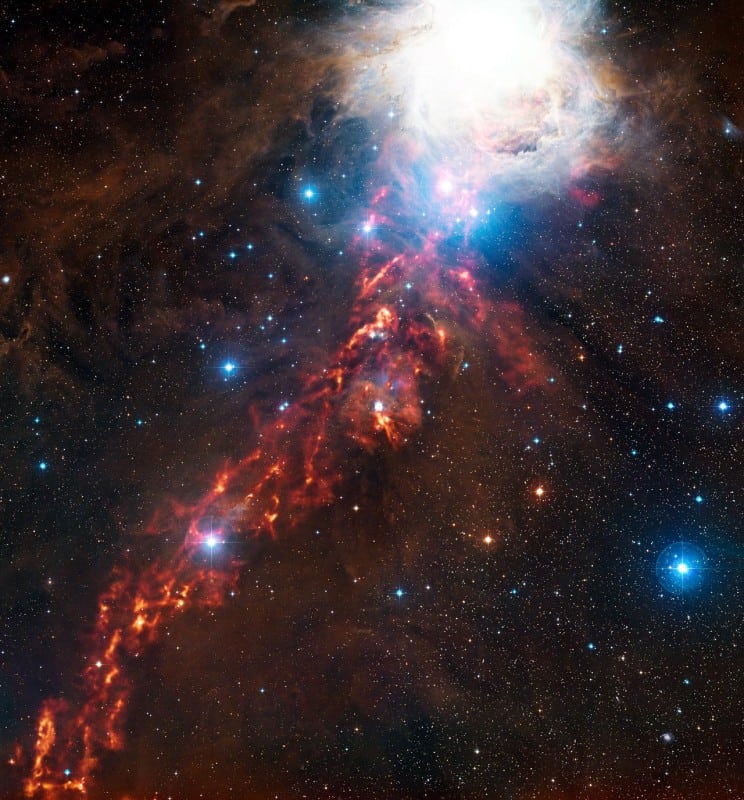The Cosmos with the Orion Molecular Cloud
The new image shows a part of a bigger complex called the Orion Molecular Cloud located about 1,350 light-years away. This region is a rich melting pot of bright nebulae, hot young stars and cold dust clouds.
The submillimeter-wavelength glow arising from the cold dust clouds is seen in orange in this image and is overlaid on a view of the region taken in the more familiar visible light.
The large bright cloud in the upper right of the image is the well-known Orion Nebula, also known as Messier 42.
The Orion Nebula is the brightest part of a huge stellar nursery where new stars are being born, and is the closest site of massive star formation to Earth.
The dust clouds form beautiful filaments, sheets, and bubbles as a result of processes including gravitational collapse and the effects of stellar winds. These winds are streams of gas ejected from the atmospheres of stars, which are powerful enough to shape the surrounding clouds into the convoluted forms seen here.
The astronomers have used these and other data to search the region of Orion for protostars – an early stage of star formation.
They have so far been able to identify 15 objects that appeared much brighter at longer wavelengths than at shorter wavelengths.
These newly discovered rare objects, described in a paper published in the Astrophysical Journal (ESO’s version), are probably among the youngest protostars ever found, bringing astronomers closer to witnessing the moment when a star begins to form.
